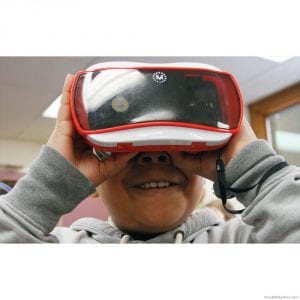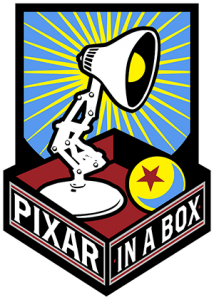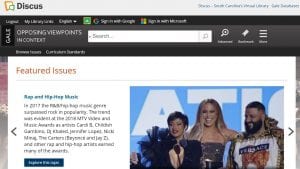A Common Technology Tool
with Unique Uses
 An Apple iPod is a common technology tool that my elementary age students are familiar with utilizing when outside of the classroom. Due to its size and mobility, this particular tool would be extremely useful in the library and in a regular classroom.
An Apple iPod is a common technology tool that my elementary age students are familiar with utilizing when outside of the classroom. Due to its size and mobility, this particular tool would be extremely useful in the library and in a regular classroom.

First, I love the notion of using the iPod as creating a virtual field trip for my students. Discovery Education provides virtual field trips to John Deere and Madden NFL which help bring some practical elements (sports and farming are surrounding the students in our area) that bring to life careers and perspectives on those careers that aren’t open initially when you think of working at such places.
A second site to use for curated virtual field trip links is from Common Sense Media these are annotated websites that also state whether the field trip is free or paid for. I loved this site, and thought it a great way to utilize the iPod as a tool for our students. This is a versatile service that would enable us to help create unique experiences for our classroom students based on the content the teacher needs covered. So, a nice, collaborative educational experience that would enable our students to travel without having the hassle of finding funding to leave their area.

Second, WeVideo is a tool where my students can make great use of our green screen kit, and create their own book trailers, book talks, readers theater dramatizations, and morning news show with an easy to use, interactive format. It does cost money, but at $93 a year for a subscription, it is manageable.

Although the iPod is a common technology tool, there are uses that can be performed in the classroom in a familiar format for our students so there is little adjustment, and it is open to intuitive use. This tool adheres to the pedagogical perspective listed in Kearney’s (2012) article for creating mobile learning that emphasizes authenticity, collaboration, and personalization. Discovery Education would provide authentic field trip experiences for my students, while WeVideo would enable the students to create collaborative and personalized technology to share with their peers.
Thankfully, the technology has been around long enough that there are a vast amount of applications available to help our students in a variety of ways. The iPod can be used to help with the Pixar in a Box storytelling features, too, so it’s a versatile tool that can be handled by our smallest users. Definitely an item that I would love to incorporate in my library as a station for my users.
What I appreciated in this week’s readings, though, was mentioned in the Green (2014) article is that the technology leadership role was to help classroom teachers create authentic and unique technology-enabled learning experiences (42).
Sources
Discovery Education Virtual Field Trips. Discovery Education. (2018). Retrieved from http://www.discoveryeducation.com/Events/virtual-field-trips/explore/index.cfm?campaign=flyout_parents_virtual_field_trips
Green, L. S. (2014). Through the looking glass: examining technology in school librarianship. Knowledge Quest. 43(1). pp. 37-43.
Kearney, M. and Schuck, S., Burden, K., and Aubusson, P. (2012). Viewing mobile learning from a pedagogical perspective. Research in Learning Technology. 20. 14406 – doi: 10.3402/rlt.v20i0.14406.
Pixar in a Box | Partner content |Khan Academy. (2017). Retrieved from https://www.khanacademy.org/partner-content/pixar
Virtual Field Trip Apps and Websites. Common Sense Media for Educators. (2018). Retrieved from https://www.commonsense.org/education/top-picks/virtual-field-trip-apps-and-websites
Online video editor for web, mobile, windows, & mac. WeVideo. (2018) Retrieved from https://www.wevideo.com/





